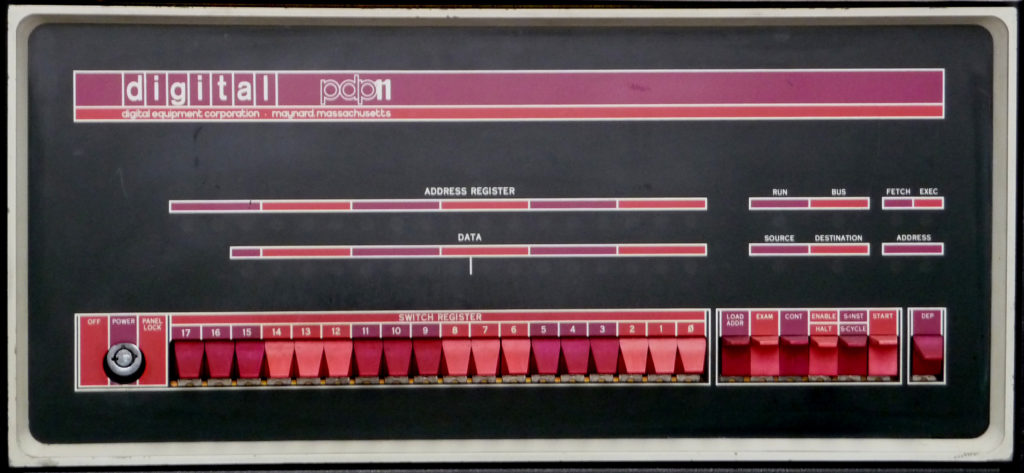Mimix is an invention that will transform how we work, how we study, and how we share information.
The ending of WWII changed everything for our country. It brought great prosperity but it left us with the tools to destroy ourselves. A brilliant scientist of the day named Vannevar (vuh-NEE-ver) Bush wrote that we needed something to help us “think better.” His answer was a machine called a memex. It would have been enormous and expensive and was never completed. But the dream is still with us.
Today, I’m going to share how our Mimix software will help people think better with new technology we’re creating. Our company’s name and slogan are inspired by his pioneering work.

You can’t watch the news today without hearing about artificial intelligence. It’s in everything from washing machines to the space program. But AI is missing from two things we do every day – reading and writing.
Now when I say “AI for written documents,” you may be thinking of spelling correction and stuff like that. Those tools are great, but they don’t help you think better and they don’t help the next person get any more out of your writing than what you put in.
If there’s more to a washing machine than meets the eye, then there’s certainly more to writing. Mimix is the first AI program for reading, writing, and communicating with others.

Word processors are great, but they’re also stupid. I’ll give you an example.
How many moons does Jupiter have? Would you have guessed 79? I wouldn’t. You might say, “Well, Google it,” but even Google would lead you to the wrong answer because 12 of them are recent discoveries. Most documents Google can find won’t know that, and Google won’t help you if you get it wrong.
Besides, why should you have to go to Google as a separate act? That doesn’t seem very intelligent. Surely the correct information could come to you automatically, as you write. Can’t it? We say it can.

Word processors throw away most of the work you put into your writing. You say, “What do you mean, throw it away?” Think of the last time you wrote a report for work or school. How many hours of research did you put in? A lot more than the reader will ever see.
We do the reader a disservice when we throw work away. We’re making that person repeat what you already did! That’s missing intelligence. Can your final documents include the research you went through? We say they can.
Of course, academic papers have footnotes but those make your readers repeat your work, too. Why should they have to find the sources for themselves? We say this needs to change.

The tools we use for reading are no smarter than the word processor. Sure, you can click a link, but that’s you repeating work again.
Even the links are dumb. Should you have to read an entire book to see a quote in context? A link can’t take you to the exact facts the author mentioned. If you don’t scour the source material, you might come to the wrong conclusions or be mislead by someone who didn’t get the facts right.

Browsers and PDF viewers don’t know one piece of paper from the next. A browser can’t tell that you read 27 stories on the California wildfires and some of them contradict each other.
Today’s tools are forgetful. There’s no way “rewind” your work stream. Often we need to go back to a paragraph we read this morning. But Adobe Acrobat doesn’t know what you did this morning or two years ago.
These tools are missing the intelligence to relate facts together across documents and over time. Our disks and cloud storage folders are a mess. Can software better organize your work? We say it can.

A better term for reading and writing is research. Important writing demands that you do your homework. You postulate your ideas, check out what others have done, make notes, and write your own new material.
Today, these are all separate tasks with no relation to one another. Can a single program bring reading and writing together? We say it can. In fact, this was a key part of Bush’s original dream for the microfilm-based Memex machine.

We’ve come a long way since microfilm, but modern programs still make you use an awful lot of windows just to get a simple project done. The word processor can’t see that you’re quoting from a web browser. It doesn’t know if you’ve forgotten to include critical information that’s sitting just one window away.
We’re left to juggle multiple programs and documents in order to complete one goal: sharing our ideas with someone else.

Mimix radically changes the broken research model. First, it brings together reading and writing in the same program. More importantly, Mimix uses AI to make sense of what’s going on in your research.
Using a concept we call canonical data, Mimix verifies facts as you read and write. Obviously, many things are matters of opinion – but many more are not.
How many moons does Jupiter have? When was Walt Disney born? And who shot JFK? Mimix lets writers and readers choose their own canonical data sources and change them later, even in someone else’s writing.
If you were trying to answer “Who shot JFK?,” which sources would you choose as canonical?

Mimix can also see across your documents in linear time. It knows that two papers you wrote are related, even if you created one yesterday and one a year ago. It knows that two web pages are related in content even if they came from different websites.
Mimix not only saves the reader time, avoiding the task of organizing web bookmarks or fumbling through document folders hunting down that critical piece of information. It also surfaces new insights and facts that you or your readers might easily miss in a pile of unrelated papers.

Writing might be an unexciting business but it’s absolutely necessary. We rely on the written word for everything from our medical records to our laws. Errors and omissions in writing can keep you from getting a job – or cause a plane crash.
Census reports and investigation by the Wall Street Journal show that ⅔ of the population uses computer documents in their work. About ⅓ of them are the document creators and ⅔ are the consumers.
Students at all levels are writers, but most important writing starts at the university level. The US Department of Education says 20 million students are enrolled in universities.
The numbers in this slide are for the US alone, but the market is worldwide. Everywhere, every day, hundreds of millions of people need to create and consume factual written materials.

Written documents are a big business. They’ve created vast profits for Microsoft, Google, and Adobe. Each of these companies has grown to near monopoly status precisely because the written word is so important.
Losing your work is even worse, and this has led to the rise of cloud computing. Today, we expect our documents to be everywhere – even after we replace a broken smartphone, upgrade a computer, or travel for a meeting.
Any commercially viable solution for reading and writing must be fully cloud enabled and not rely on users to install software, fix bugs, or create backups.

When computers were first invented, the companies that built them included software for free. This was necessary to get anyone to buy the boxes. The program code behind that software was also available for users to inspect and modify. This is known today as open source.
In 1983 beginning with IBM, big software companies introduced a new model. Instead of source files they started shipping compiled or binary files that couldn’t be viewed or edited by humans. Most desktop software like Microsoft Word and mobile apps now fall in this category.
A backlash against closed source software began with the Linux operating system movement. Today, the trend has reversed with large companies demanding open source from their vendors. This allows customers to look for security holes, to edit the software to fit their needs, and to avoid vendor lock-in.

Open source is behind the largest software acquisition in history, IBM’s purchase of Linux vendor Red Hat.
IBM didn’t want Red Hat for Linux; they could get that for free. IBM bought Red Hat because supporting Linux users is a multi-billion dollar business today that can only grow in the future. If IBM can become the go-to brand for hosted, supported Linux, they might have a chance to save their stodgy business.
It’s a great irony that IBM dipped their toes in open source when they invented the PC. Legal PC clones led to the mass market adoption of Windows that we know today. What IBM failed to do last time around was to monetize that invention.

The things that make open source wonderful also make it terrible. It’s the biggest DIY project in history. Every bit of the open source world is DIY. That might be OK if you have a techie team behind you, but it doesn’t work in the consumer space. This is why we don’t see Linux on desktop machines. It’s just too much work to coordinate all the moving parts.
Enterprise users can grow their own systems, but they don’t like it. Ford wants to weld together cars, not code. These customers were the first to demand that someone package up open source tools for them. They want their software hosted, backed up, and fixed when it’s broken – all things that the free Linux community couldn’t provide. They want clear and easy-to-read documentation and they want someone to answer the phone when they call for support.
To satisfy these demands, The Mimix Company will provide a paid software suite with turnkey service for both enterprise and consumer customers.
I’m excited about what we’re doing at Mimix and I hope you are, too!
always, you’re invited to email me with your thoughts. I look forward to hearing from you.
– D




About The Author: Mimix
More posts by mimix